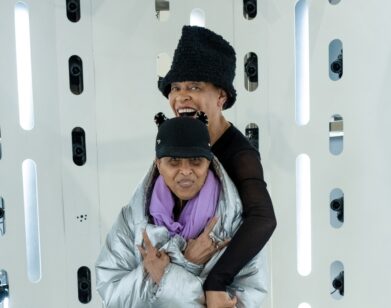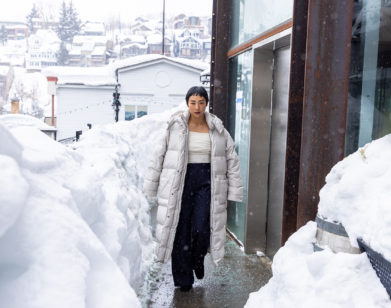Exit Poll: ‘Bloody Nose, Empty Pockets’ Raises a Glass to Bars Everywhere

Exit Poll is a series exploring the good, bad, and outright deranged films and events our editors are attending. This week: Jadie Stillwell celebrates her first night out in months with the Ross brothers’ Bloody Nose, Empty Pockets—from the comfort of her couch, of course.
Since late March, when COVID-19 landed me in my childhood home, I have been exclusively consuming a very specific selection of media: John Cassavetes’s entire filmography (I call this “hot Cassavetes summer”) and reruns of Cheers (I call this “a depressive episode”). There is no correlation between the two, except that I stream both to the same living room TV. But if you were to endeavor at a kind of quarantine art-alchemy—like baking bread, but with things I like—you might find yourself sliding into the hyper-realist hollows of a bar where everybody knows your name; you might find yourself in Bill and Turner Ross‘ Bloody Nose, Empty Pockets.
Screening at Lincoln Center’s virtual cinema, Bloody Nose, Empty Pockets depicts a bar on the brink. Done up like a documentary, it tracks a group of regulars at Roaring ‘20s, a dive on the edges of the ever-mutating Vegas strip, over the bar’s last night in business. The product of several rounds of real-life barfly auditions and two 18-hour shooting days, the film is a series of strikingly unaffected encounters. Its scenes play out loose but stay held fast by our oblique awareness of what’s on the horizon—in addition to the bar’s imminent closure, the film takes place just before the 2016 election. Still, one gets the sense that ‘20s’ last evening is much like all the others that came before. Its elegiac mode seems informed less by the bar’s imminent closure than by the maxim that governs all saloons: you don’t have to go home, but you can’t stay here. In this way, the film is an exceedingly honest entrance into the cyclical comfort of barfly temporality. There is opening, there is closing, and there is all that space in between.
In Bloody Nose, that space is glorious, varied and tender as it veers out of quotidian community antics into moments of tempered intimacy. Early in the day, peering up at the TV, the regulars bitch about hard answers on Jeopardy; later, fellow veterans Bruce and Pam talk quietly, heads together, about their mutual alienation. Michael, a witty, wizened mainstay upon whom the long day’s sun rises and sets, falls asleep on a corner couch and is awoken only when a younger patron lies gently atop him. In the earlier scene, as Bruce laments the long, lonely return from war, he begins to cry. And, nodding, Pam wipes his tears. The viscera implied in the film’s title is fully embodied in moments like these. The “space between” no longer referring just to the dwindling minutes—occasionally marked by a superimposed digital clock face—until last call, but to the gap that ebbs and flows between people desperate to connect. At its best, the film becomes about a closing of a different kind.
In the age of COVID, bearing witness to this closeness, both physical and emotional, is unexpectedly sobering. Perhaps the fact that I attended a screening of this film from the couch where I studied for my SATs should have given this away, but we’re no longer living in the same world that Bloody Nose, with its spilled drinks and staggered hugs and safe-harbor shoulders, builds and occupies. Last week, New York magazine published a survey of expert responses to our most pressing pandemic questions. What places should you avoid at all costs? “Bars.” Wide-spread deafness to that advice aside, the blunt designation of bars not as safe harbors, refuges for outcasts, loners, and losers alike, but rather as danger zones for all who dare to enter, shifts the experience of watching Bloody Nose, Empty Pockets. What started out as a heartfelt goodbye to one bar—or one type of bar, maybe—feels like a functional farewell to all of them.
This is where the tension of Bloody Nose’s quasi-documentary form, which has been the subject of some critical debate, breaks down. Roaring ‘20s doesn’t exist. It never did. There is no bar by that name on the Vegas strip. (The one we see onscreen is actually located in New Orleans.) But the Roaring ‘20s of the Ross brothers’ collective imagination, nothing if not a place to hold together people who might otherwise find themselves adrift, doesn’t exist either. It can’t; there’s no room for it amidst the constant press of a pandemic. The film is neither a true documentary nor entirely a work of fiction. But watching it cocooned on my couch, feeling impossibly far from nights spent leaning against strangers in line to the ladies’ room, it is a perfect fantasy.






